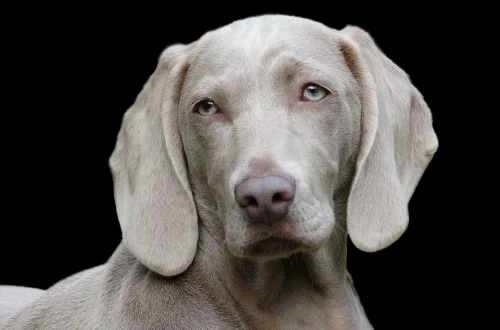
Understanding Uveal Cysts in Dogs: Causes, Symptoms, and Treatment
Understanding Uveal Cysts in Dogs: Causes, Symptoms, and Treatment
Uveal cysts are an intriguing yet often concerning condition that can affect our canine companions. These fluid-filled sacs can form in the uveal tract of the eye, which consists of the iris, ciliary body, and choroid. While uveal cysts are generally considered benign, they can cause a range of symptoms and complications that may require veterinary attention. As dog owners, it’s essential to stay informed about various health issues that can impact our pets, including those that affect their vision.
Understanding the nature of uveal cysts, their potential causes, and the signs to watch for can help you take proactive steps in managing your dog’s eye health. Regular veterinary check-ups and being vigilant about changes in your dog’s behavior are paramount. Early detection can lead to better outcomes, ensuring that any issues are addressed promptly.
In this article, we will delve deeper into the intricacies of uveal cysts in dogs, exploring their causes, symptoms, and treatment options, ultimately empowering you to make informed decisions for your furry friend.
What Causes Uveal Cysts in Dogs?
Uveal cysts can arise from a variety of factors. Understanding these underlying causes can be critical in preventing their occurrence or recurrence. One of the most common reasons for uveal cyst development is genetic predisposition. Certain breeds may be more prone to developing these cysts, suggesting that heredity plays a significant role. For instance, breeds like the Labrador Retriever and the Siberian Husky have shown a higher incidence of uveal cysts, highlighting the importance of breed-specific awareness.
Additionally, uveal cysts can be associated with systemic diseases or conditions that affect the eyes. Conditions such as uveitis, which is the inflammation of the uveal tract, can lead to cyst formation. Inflammation can disrupt the normal fluid balance in the eye, resulting in the development of cysts.
Environmental factors can also contribute to the formation of uveal cysts. For example, prolonged exposure to irritants like dust, smoke, or chemicals can lead to chronic irritation of the eye, potentially resulting in cysts. Moreover, trauma to the eye can cause structural changes that may lead to cyst formation. This underscores the importance of protecting your dog’s eyes from potential hazards.
In some cases, age-related changes in the eye can also play a role in the development of uveal cysts. As dogs age, their eyes undergo various changes which may predispose them to developing cysts. Understanding these factors can help pet owners take preventive measures, such as ensuring regular eye examinations by a veterinarian.
Recognizing the Symptoms of Uveal Cysts
Identifying uveal cysts in dogs can be challenging, as some dogs may not exhibit any noticeable symptoms at all. However, there are several signs that can indicate the presence of uveal cysts, and being aware of these symptoms is crucial for timely intervention.
The most common symptom associated with uveal cysts is a change in the appearance of the eye. You may notice a dark, round mass in the eye, typically located on the iris. This cyst can vary in size and may be more prominent in certain lighting conditions. It is essential to monitor your dog’s eyes regularly to spot any changes early.
In addition to visible signs, dogs with uveal cysts may display behavioral changes. If the cyst is causing discomfort or vision problems, your dog may exhibit signs of distress, such as pawing at the eye, squinting, or avoiding bright lights. Changes in appetite or lethargy may also occur if the dog is in pain or discomfort.
In some cases, uveal cysts can lead to complications such as increased intraocular pressure or secondary glaucoma, which can result in more severe symptoms. These can include redness in the eye, excessive tearing, or swelling of the surrounding tissues. If you notice any of these signs, it is essential to consult a veterinarian promptly for a thorough examination.
Regular veterinary check-ups can help in early detection, as veterinarians are trained to recognize subtle changes in eye health that may go unnoticed by pet owners. Being attentive to your dog’s eye health and seeking veterinary advice when necessary can make a significant difference in managing uveal cysts effectively.
Treatment Options for Uveal Cysts
When it comes to treating uveal cysts, the approach may vary depending on the severity of the condition and the symptoms experienced by the dog. In many cases, uveal cysts do not require immediate treatment, particularly if they are asymptomatic and not causing any discomfort. However, regular monitoring is essential to ensure that the cyst does not grow or lead to complications.
If a uveal cyst is causing discomfort or affecting vision, veterinary intervention may be necessary. Treatment options can include medicinal therapies aimed at reducing inflammation and discomfort. Topical medications, such as anti-inflammatory eye drops, can help alleviate symptoms and minimize irritation.
In more severe cases, surgical intervention might be recommended. This could involve the removal of the cyst if it is deemed to be problematic. Surgical options should be discussed with a qualified veterinarian, who can assess the risks and benefits specific to your dog’s situation.
Post-treatment care is also crucial for recovery and eye health. Follow-up appointments with the veterinarian may be necessary to monitor the healing process and ensure that the cyst has not returned. Additionally, pet owners can take proactive measures to maintain their dog’s eye health, such as providing a balanced diet rich in antioxidants, ensuring proper hydration, and minimizing exposure to irritants.
Ultimately, the prognosis for dogs with uveal cysts is generally favorable, especially when detected early and managed appropriately. Open communication with your veterinarian and staying informed about your dog’s eye health can help you navigate this condition effectively.
**Disclaimer:** This article is for informational purposes only and should not be considered medical advice. Always consult a veterinarian for any health concerns regarding your dog.




